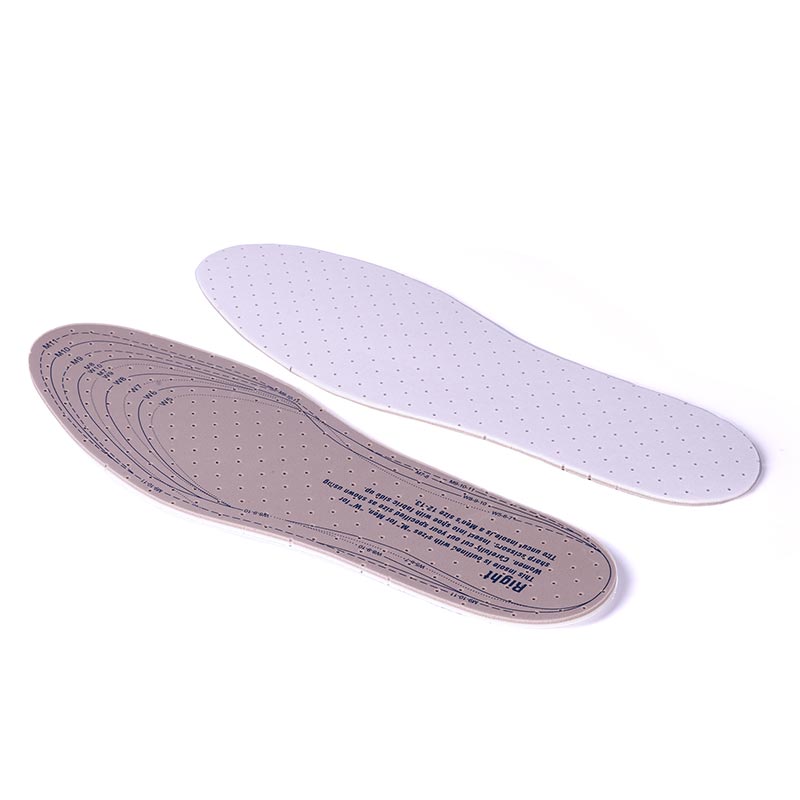What Makes Insoles for Adults the Key to Better Foot Health and Comfort?
2025-11-12
Insoles for adults are specially designed shoe inserts that provide support, cushioning, and stability to improve comfort and foot alignment. They are used by people of all ages and activity levels to reduce pressure on the feet, correct posture, and prevent discomfort during daily movement. Whether for professional use, sports, or everyday walking, insoles play a crucial role in maintaining healthy foot mechanics and overall body balance.
The human foot contains 26 bones and numerous ligaments and tendons, making it highly complex. Even small misalignments can lead to discomfort, fatigue, or chronic pain in the knees, hips, and lower back. Insoles act as a foundation to realign these structures, ensuring weight is distributed evenly and impact is absorbed efficiently.
The central purpose of this article is to explore the key functions, advantages, and future trends of adult insoles, highlighting how technological advancements continue to improve their performance.
Product Overview and Parameters
The following table outlines the main parameters and features commonly found in high-quality insoles for adults:
| Parameter | Description |
|---|---|
| Material | Memory foam, EVA (Ethylene Vinyl Acetate), gel, latex, or cork |
| Thickness | 3 mm – 10 mm, depending on support type |
| Arch Type | Low, medium, or high arch support |
| Surface Layer | Breathable fabric or antimicrobial mesh |
| Shock Absorption | Gel pads or air cushioning |
| Functionality | Anti-fatigue, odor control, moisture-wicking, orthopedic support |
| Size Range | US 5–14 (customizable) |
| Applications | Running shoes, work boots, casual footwear, orthopedic shoes |
High-quality adult insoles are typically ergonomically shaped to follow the natural curvature of the foot. Their layered construction ensures comfort and stability—combining soft upper materials for comfort and firmer bases for support.
Why Are Insoles for Adults So Beneficial?
a. Enhancing Comfort and Reducing Fatigue
Insoles provide a cushion that absorbs shock and reduces the pressure placed on the heels, arches, and forefoot. This is particularly important for individuals who spend long hours standing or walking, as the continuous impact can lead to muscle fatigue and soreness. By evenly distributing body weight, insoles minimize strain on the plantar fascia and other key areas.
b. Improving Posture and Alignment
Foot misalignment can cause a chain reaction throughout the body, leading to pain in the knees, hips, and lower back. Orthopedic insoles for adults are designed to support the arches and stabilize the ankles, which helps correct gait patterns. As a result, users experience improved posture and reduced risk of injury.
c. Preventing Foot-Related Conditions
Insoles can play a preventive role in conditions such as plantar fasciitis, heel spurs, and metatarsalgia. By supporting the arch and cushioning the heel, they reduce repetitive stress that often leads to inflammation or tissue damage. Customizable models can also address specific foot shapes or medical needs.
d. Increasing Athletic Performance
For athletes, balance and energy transfer are essential. High-quality insoles provide shock absorption and responsive rebound, helping improve performance and reduce recovery time. They also enhance stability during motion, allowing for better control during running, jumping, or lateral movements.
e. Hygienic and Durable Design
Modern insoles for adults use breathable, odor-resistant materials that maintain freshness even after extended wear. Some feature removable and washable covers, ensuring long-term hygiene and product lifespan.
How Are Insoles for Adults Designed and Functionally Evolving?
Technological advancement is revolutionizing how insoles are made and used. Manufacturers are integrating science-backed materials and smart design elements to enhance both comfort and functionality.
a. Material Innovation
-
Memory Foam and Gel: These materials adapt to foot shape, providing personalized comfort and pressure relief.
-
EVA Foam: Lightweight and durable, EVA foam offers excellent shock absorption without compromising stability.
-
3D Printed Insoles: Emerging technology allows for fully customized fits based on foot scans, improving both comfort and corrective capability.
b. Ergonomic Design
Advanced insoles feature anatomical curves that mirror the human foot’s structure. Multi-layer construction provides balance between softness and firmness—top layers for comfort, middle layers for shock absorption, and base layers for structural support.
c. Biomechanical Support
Some models are developed with guidance from podiatrists to align with human biomechanics. By stabilizing the subtalar joint and maintaining proper pronation, these insoles promote smoother motion and reduce injury risk.
d. Moisture Control and Temperature Regulation
Modern insoles integrate breathable mesh and moisture-wicking fibers that prevent overheating and sweat buildup. Thermoregulating layers maintain optimal comfort, making them suitable for both summer and winter footwear.
e. Smart Insole Technology
The next generation of insoles is integrating sensor technology to monitor gait, pressure, and posture in real time. These smart insoles can provide feedback on walking patterns, helping users adjust their habits to prevent injuries and improve comfort.
What Are the Future Trends and Common Questions About Insoles for Adults?
a. Future Trends in the Insole Industry
The future of adult insoles lies in personalized comfort, sustainability, and digital integration. Manufacturers are focusing on eco-friendly materials such as natural cork and recycled EVA to reduce environmental impact. At the same time, advances in 3D printing will make fully customized insoles accessible to more consumers.
Biomechanical analysis will continue to shape product development. Future insoles will not only provide support but also collect biomechanical data for health tracking, offering insights into pressure distribution, step balance, and muscle performance.
As consumers become more health-conscious, demand for insoles that prevent injury and promote wellness is expected to grow significantly. Customizable orthotic insoles will become standard for both medical and lifestyle use, blending comfort, technology, and sustainability.
b. Common FAQs About Insoles for Adults
Q1: How often should adult insoles be replaced?
A1: Generally, insoles should be replaced every 6 to 12 months depending on usage. For active individuals or those who stand for long hours daily, replacement might be necessary more frequently. Visible signs such as flattening, odor buildup, or loss of cushioning indicate it’s time for a new pair.
Q2: Can insoles fit in any type of footwear?
A2: Yes, most adult insoles are designed to be trimmed to size, fitting a wide range of footwear such as sneakers, work boots, and casual shoes. However, choosing insoles compatible with the shoe type—sports, orthopedic, or formal—ensures optimal performance and comfort.
c. The Impact of Proper Insole Use
The consistent use of quality insoles enhances comfort, prevents injury, and contributes to better posture and energy efficiency during movement. People who switch from basic shoe liners to professionally designed insoles often report reduced fatigue, improved comfort, and better balance.
d. Market Outlook
According to recent market analyses, the global insole industry is projected to grow rapidly as people prioritize wellness and preventive healthcare. The rise of e-commerce platforms has also made it easier for consumers to access personalized and medical-grade insoles directly from manufacturers.
The Future of Comfort with XiaMen BM Health Technology Co., Ltd.
Insoles for adults are no longer simple shoe accessories—they are essential tools for enhancing daily comfort, preventing fatigue, and promoting long-term foot health. From ergonomic design to cutting-edge materials and smart sensor integration, the evolution of insole technology continues to meet the needs of modern consumers.
XiaMen BM Health Technology Co., Ltd. specializes in producing high-performance insoles that combine comfort, durability, and innovation. The company’s dedication to ergonomic design and material excellence ensures that every pair delivers optimal support for different lifestyles—whether for athletes, professionals, or everyday users.
For more information about our insole solutions and customized services, contact us today to learn how XiaMen BM Health Technology Co., Ltd. can help enhance comfort and improve foot health in every step.



